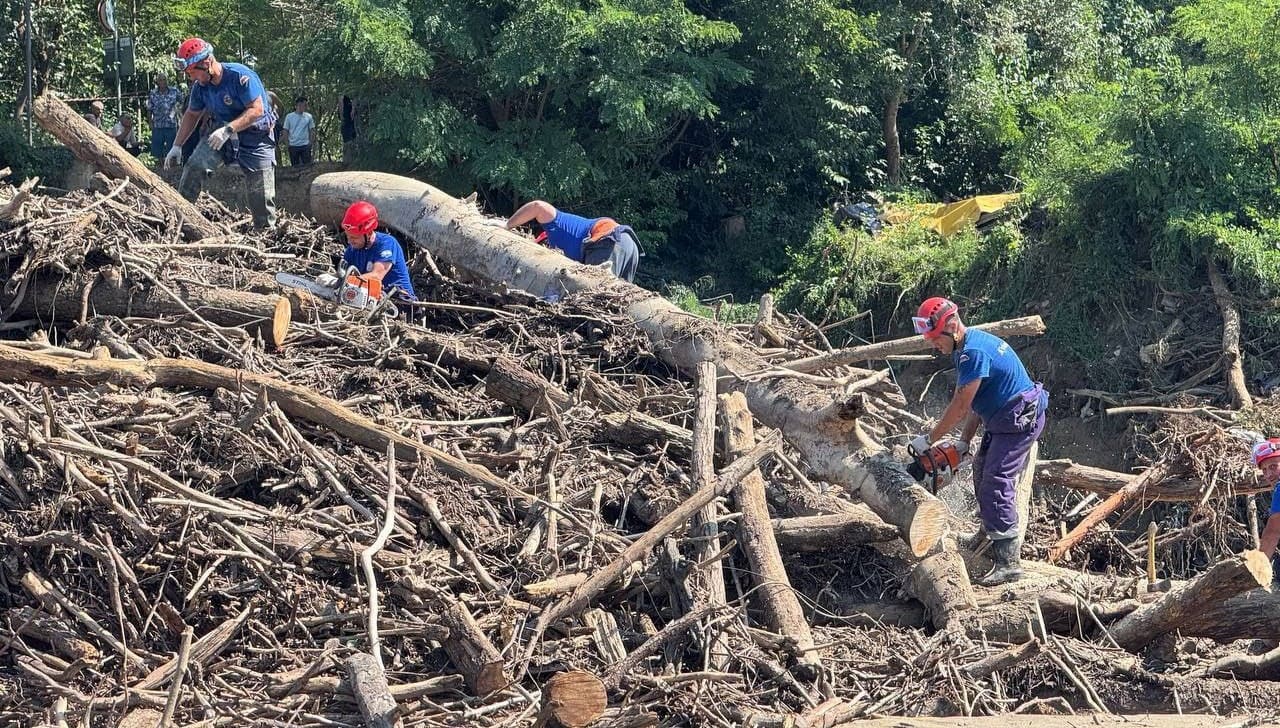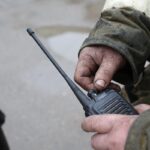In the municipality, 965 specialists and 87 pieces of equipment continue to eliminate the consequences of the flood that occurred on Sunday.
Rescuers are currently clearing silt and sediment from social facilities and assisting residents in the private sector. Over 600 tons of debris have already been removed from the flooded areas.
A drinking water distribution point has been opened at School No. 35 in the Novomikhailovsky settlement. In the village of Lermontovo, the water pipeline has been partially restored. There are no people in temporary shelters.
Assessment commissions continue to work, documenting the damage caused by the severe weather.
In the villages of Moldavanovka, Defanovka, Plakho, and the settlement of Novomikhailovsky, power supply has been restored.
“Pumping out water from apartment buildings and private residences has been completed. Over the past 24 hours alone, emergency services pumped out 11,400 cubic meters of water.”
Additionally, repair and restoration work on sewage pumping stations in Novomikhailovsky has been completed. Water supply has been fully restored across the entire settlement.
“In the village of Moldavanovka on the Shapsukho River—where the automobile bridge was washed away by the flood—rescuers have installed a temporary crossing.”
It was also noted that the work of damage assessment commissions continues. Compensation claims have been submitted by 616 people whose property was affected by the flood.
In the village of Lermontovo, the river caused significant damage. Around 300 homes remain isolated without a crossing. Repair work is set to begin in mid-August.
According to experts, over 380 houses have been inspected so far. Recovery efforts in the district are ongoing.
Shapsukho River
The Shapsukho River is a small river located in the Krasnodar Krai region of Russia, flowing through the western Caucasus Mountains near the Black Sea coast. It is known for its scenic beauty and is situated near the historical lands of the Shapsug people, a subgroup of the Adyghe (Circassian) ethnic group, who have inhabited the area for centuries. Today, the river and its surroundings attract nature lovers and hikers exploring the region’s lush landscapes and cultural heritage.
Tuapse district
The Tuapse District is a coastal region in Krasnodar Krai, Russia, known for its scenic Black Sea coastline, subtropical climate, and rich history dating back to ancient Greek colonies. It became a significant military and trade hub during the Russian Empire and played a key role in World War II as a strategic port. Today, it is a popular tourist destination, offering beaches, mountain landscapes, and historical sites.
School No. 35
School No. 35 is a historic educational institution, often recognized for its role in local communities or unique academic programs. While specific details vary by location, some versions of the school have gained prominence for their contributions to education during significant periods, such as the Soviet era in Eastern Europe. Today, it may serve as a symbol of resilience or innovation in learning, depending on its regional context.
Novomikhailovsky settlement
Novomikhailovsky is a coastal settlement in Russia’s Krasnodar Krai, located along the Black Sea. Established in the 19th century, it was originally a Cossack village and later developed into a popular seaside resort. Today, it is known for its beaches, subtropical climate, and proximity to the scenic landscapes of the Caucasus Mountains.
village of Lermontovo
Lermontovo is a small village in the Penza Oblast of Russia, historically linked to the famous Russian poet Mikhail Lermontov. Although the poet never lived there, the village was named in his honor, and it reflects the rural charm of 19th-century Russian life. Today, it serves as a quiet reminder of Russia’s cultural heritage, attracting visitors interested in Lermontov’s legacy and traditional countryside landscapes.
village of Moldavanovka
Moldovanovka is a small village in Kazakhstan, originally settled by ethnic Moldovans in the early 20th century as part of agricultural resettlement programs. The village reflects a blend of Moldovan and Kazakh cultural influences, particularly in traditions and cuisine. Today, it remains a quiet rural community with a unique cultural heritage tied to its historical roots.
village of Defanovka
Defanovka (also spelled Dyfanivka or Дефанівка in Ukrainian) is a small village located in the Kherson Oblast of southern Ukraine. Historically an agricultural settlement, it was established in the 19th century and has been influenced by the region’s Cossack and Russian imperial past. The village, like many in rural Ukraine, reflects traditional agrarian life and has faced challenges due to its proximity to conflict zones in recent years.
village of Plakho
The village of Plakho is a small, traditional settlement located in Georgia, known for its scenic landscapes and historical significance. While detailed historical records are limited, it is part of the rich cultural heritage of the region, often associated with Georgia’s agrarian past and traditional rural life. The village offers a glimpse into the country’s authentic countryside, with preserved customs and architecture.






